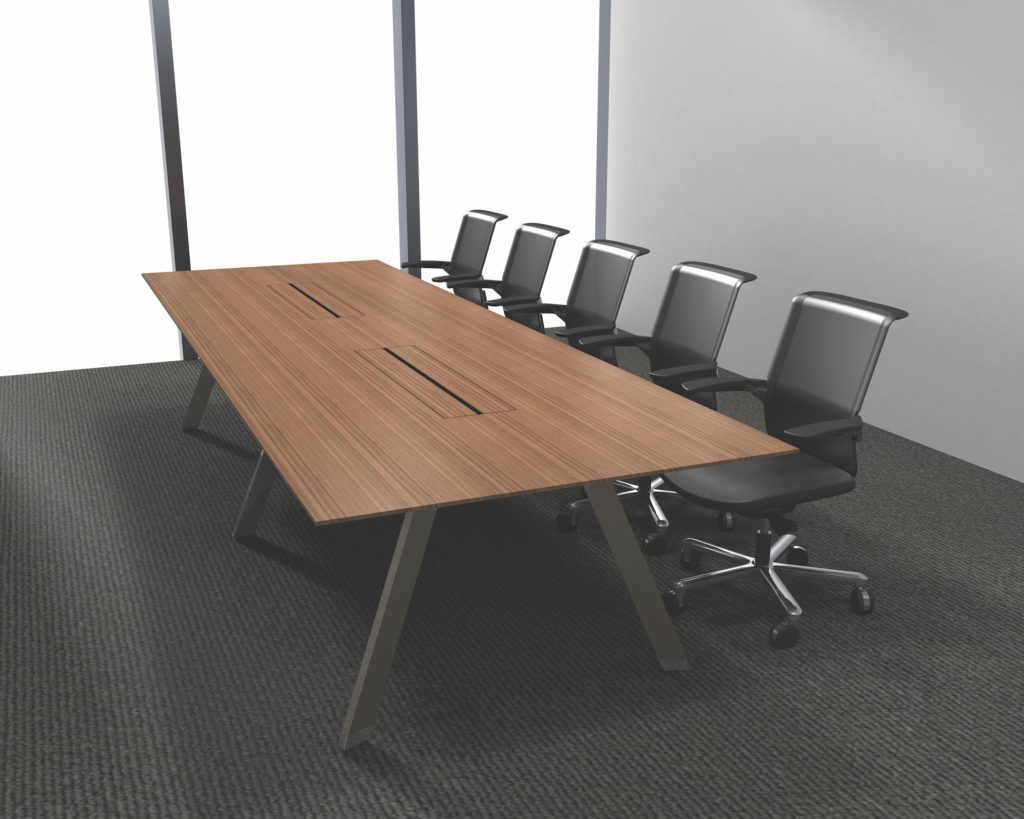
When setting up a professional office space, one of the most crucial aspects to consider is the size and layout of the furniture—especially the conference table. The right conference table dimensions can significantly affect comfort, productivity, and even the impression your business makes on clients and partners. Whether you are furnishing a large boardroom or a compact meeting area, understanding table dimensions ensures that you use the space efficiently while maintaining a functional and aesthetic environment.
In any workplace, the conference room serves as a hub for brainstorming sessions, client meetings, team briefings, and executive discussions. A table that is too large may crowd the room, leaving little space for movement, while one that is too small can limit seating capacity and hinder communication. Hence, selecting the right conference table size is more than a matter of furniture—it’s a strategic decision that supports workflow and business operations.
Common Standard Conference Table Dimensions
Conference tables come in various shapes and sizes. The most common ones are rectangular, boat-shaped, racetrack, and round. Each shape has its own set of standard dimensions, and choosing the correct one depends on your room size, seating needs, and design preferences.
For rectangular conference tables, the standard dimensions usually start at:
- 6 feet (72 inches) in length – comfortably seats 6 people
- 8 feet (96 inches) in length – seats 8 to 10 people
- 10 feet (120 inches) in length – accommodates up to 10 or 12 people
- 12 feet (144 inches) or longer – fits 12 or more participants
The standard width typically ranges from 36 inches to 48 inches, while the height is usually around 29 to 30 inches, which is standard for most conference tables.
Round conference tables, ideal for smaller teams and collaborative meetings, typically have a diameter ranging from 36 inches (3 feet) to 72 inches (6 feet). A 48-inch round table comfortably seats four people, while a 72-inch round table can accommodate up to eight.
Factors That Influence the Ideal Table Size
While knowing the standard conference table dimensions is helpful, several factors can affect the ideal size for your specific office. The room size is perhaps the most critical consideration. A good rule of thumb is to leave at least 3 feet of clearance on all sides of the table. This allows attendees to move around freely and ensures that chairs don’t hit the walls or other furniture.
For example, if you want a 10-foot table and you have 3 feet of clearance on each side, your conference room should be at least 16 feet long. Similarly, for the width, a table that is 4 feet wide would need a room that is 10 feet wide (4 feet table width + 3 feet clearance on each side).
Another factor is the number of users. Allow 24 to 30 inches of table space per person. So, for a table that seats 10, you would need around 240 to 300 inches (20 to 25 feet) of perimeter space, depending on the table shape and layout.
Space Planning and Room Layout Tips
When planning your conference room, always start by measuring the available space accurately. Next, determine the maximum number of people who will typically attend meetings. Consider future growth as well, so you don’t outgrow your furniture quickly.
The placement of electrical outlets, audio-visual equipment, whiteboards, and presentation screens should also be factored into the room layout. Make sure that the conference table dimensions do not obstruct views or restrict access to essential utilities.
Also, consider the flow of movement. If your conference room is regularly used for presentations or client meetings, it’s vital that people can enter, exit, and circulate around the table without disruption. Avoid placing bulky furniture near doorways or walkways. Using modular tables or expandable units can provide added flexibility in case your needs change.
Choosing the Right Shape for Functionality
The shape of the table directly affects communication and interaction. Rectangular tables are traditional and work well for formal settings. They allow for clear leadership placement and are great for larger teams.
Boat-shaped tables are wider in the middle and taper at the ends, which makes everyone more visible to each other, improving eye contact and inclusiveness. Racetrack tables, with rounded ends, offer a blend of formality and collaboration.
Round or square tables foster equality and are ideal for smaller groups or creative brainstorming sessions where everyone should feel equally involved. Depending on the purpose of your meetings, the table shape can make a noticeable difference in engagement and productivity.
Material and Style Considerations
While dimensions are key, the material and style of the table can enhance the functionality and visual appeal of the conference room. Common materials include wood, laminate, metal, and glass. Wood offers a classic, elegant look and durability. Laminate is cost-effective and comes in various finishes. Glass tables add a modern touch but require frequent cleaning.
Choose a table that matches your brand identity and office decor. Darker woods create a traditional look, while white or light finishes lend a contemporary feel. Built-in cable management systems are also a great feature for maintaining a clean and organized space.
Ergonomics and Comfort in Conference Settings
Long meetings can be tiring, so comfort is essential. The height of the table should match the seating used. Ensure that there is enough legroom and elbow space for all participants. Ergonomic chairs paired with the correct conference table dimensions can make a significant difference in reducing fatigue during extended sessions.
Additionally, consider acoustics, especially in larger rooms. Materials that absorb sound, along with proper spacing and layout, can prevent echo and ensure clear communication during discussions or virtual meetings.
Conclusion: Invest in the Right Conference Table Dimensions
Selecting the right conference table dimensions is not just a matter of measurement; it’s about understanding your space, meeting needs, team dynamics, and long-term goals. The perfect table should allow for comfortable seating, easy movement, effective communication, and a professional atmosphere that aligns with your brand.
If you’re planning to upgrade or furnish your office space in the Philippines, you can rely on office furniture supplier Philippines to provide expertly crafted conference tables in all sizes and styles—tailored to meet your business requirements and space constraints. Making the right choice in conference table dimensions is an investment in both productivity and professionalism.

























